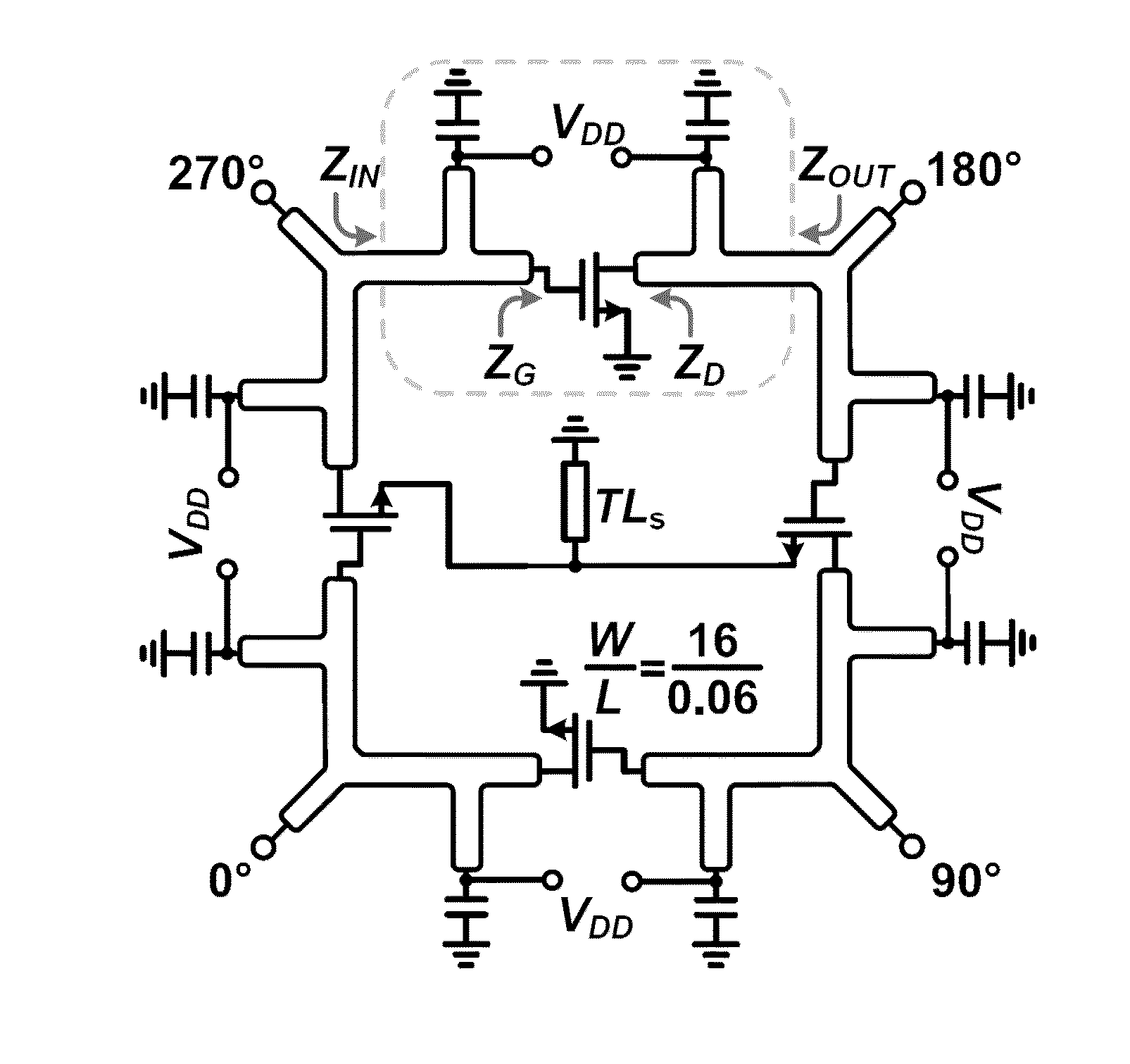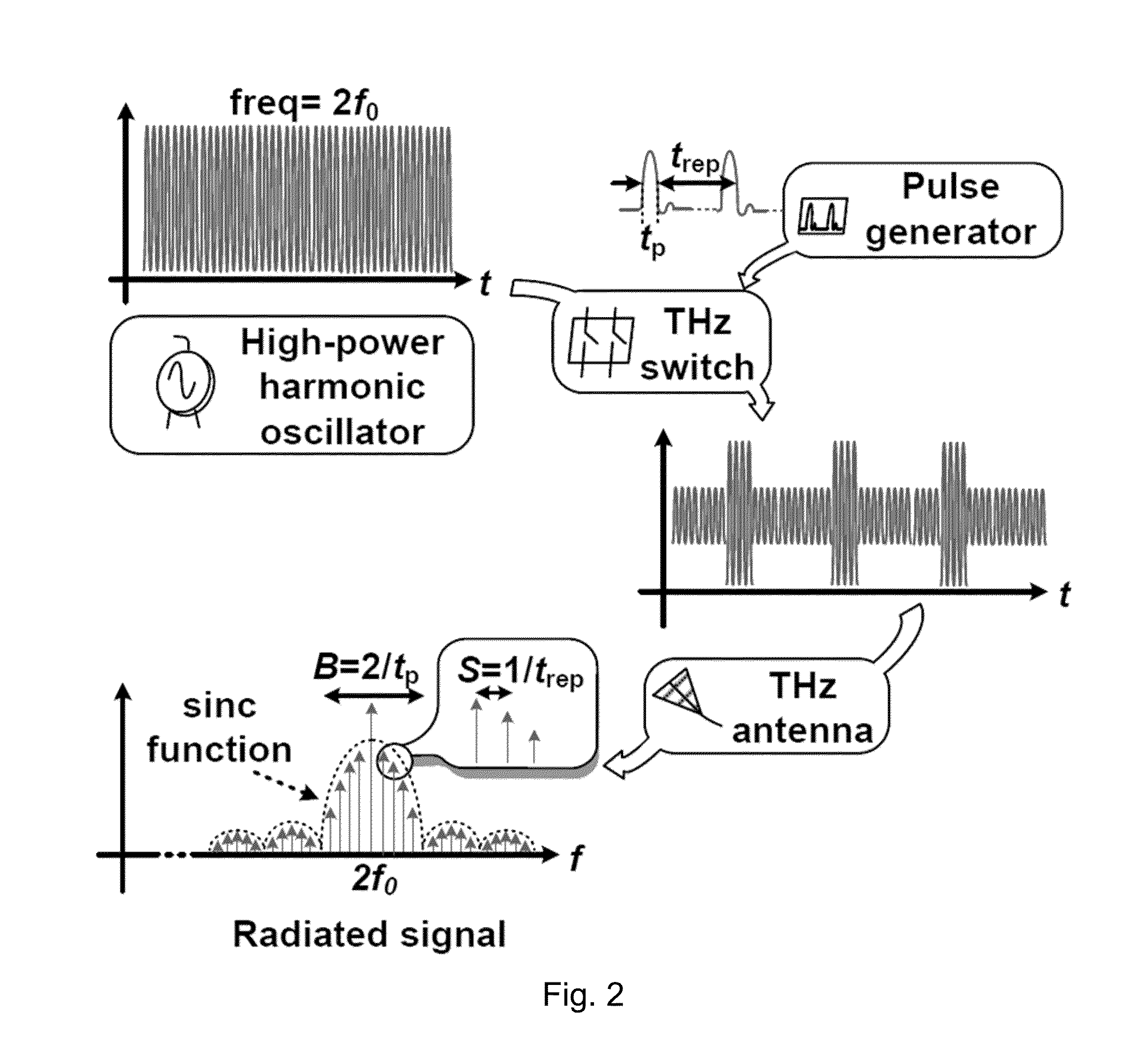System and Method for Signal Generation
a signal generation and system technology, applied in the field of terahertz signal generation, can solve the problems of limited terahertz power generation of prior cmos, low relevant frequency range, and high relevance of electronics
- Summary
- Abstract
- Description
- Claims
- Application Information
AI Technical Summary
Benefits of technology
Problems solved by technology
Method used
Image
Examples
Embodiment Construction
[0057]In an aspect of the present disclosure, embodiments of a high-power, sub-millimeter-wave radiation source are provided. In some embodiments, a 65-nm bulk CMOS technology may be used. The architecture of an exemplary transmitter 10 is shown in FIG. 1, where four differential core oscillator 20 pairs (radiator units) are mutually coupled through four quadrature oscillators 30. In an embodiment, each core oscillator pair operates at 130 GHz and generates 2nd-harmonic signals at 260 GHz that are power-combined after radiating through eight on-chip antennas 40. Embodiments may include four shunt switches 50, controlled by narrow pulses (width≈45 ps), to modulate the radiation. The pulses can be generated by local digital circuit blocks 60 with programmable repetition rate up to 5 GHz. In this way, the broadband spectrum of the pulses is up-converted to the carrier frequency of 260 GHz. Without modulation, the chip 10 achieves a continuous-wave radiated power of 1.1 mW. Under modula...
PUM
 Login to View More
Login to View More Abstract
Description
Claims
Application Information
 Login to View More
Login to View More - R&D
- Intellectual Property
- Life Sciences
- Materials
- Tech Scout
- Unparalleled Data Quality
- Higher Quality Content
- 60% Fewer Hallucinations
Browse by: Latest US Patents, China's latest patents, Technical Efficacy Thesaurus, Application Domain, Technology Topic, Popular Technical Reports.
© 2025 PatSnap. All rights reserved.Legal|Privacy policy|Modern Slavery Act Transparency Statement|Sitemap|About US| Contact US: help@patsnap.com



